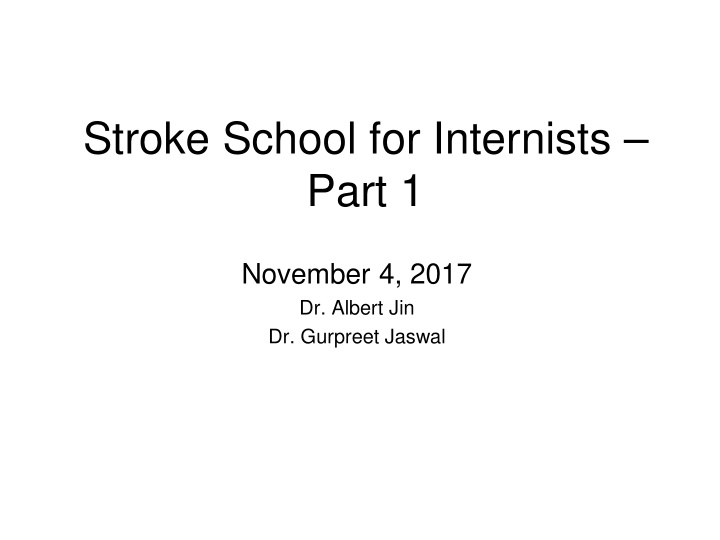



Reading a plain CT head Medulla • It helps to know where you are in the brain when scrolling through a plain CT head: – Medulla and Cerebellum – Pons – Midbrain – Basal ganglia – Corona radiata Left vertebral – Centrum semiovale artery Cerebellum
Pons Basilar artery
Midbrain Middle cerebral artery
Basal ganglia: Caudate and Lentiform Nuclei Insula Thalamus
Corona radiata
Centrum semiovale Central sulcus
Recognize acute thrombus • As you review the following slides, recall that the Midbrain level is where you see the proximal MCA (and distal ICA)
Detecting early cerebral ischemia on CT scan • Loss of grey-white differentiation – You may have to adjust the brightness and contrast (the “window width” and “window level”) • Loss of sulci • Use the same system every time you look at a CT for possible acute stroke – For example, the Alberta Stroke Program Early CT Score (ASPECTS)
Alberta Stroke Program Early CT Score M4 M1 C I L M2 M5 IC M3 M6 C = caudate, L = lentiform, I = insula, IC = internal capsule M1, M2, M3 = anterior, lateral, posterior MCA territory; M4 to M6 are above the lentiform nuclei
Right hemiparesis and aphasia: Where is the infarct?
Can you see the infarct using ASPECTS? I M2 M5
Case • 77 year old female with left hemiparesis, left homonymous hemianopia, left side sensory loss
Recommend
More recommend